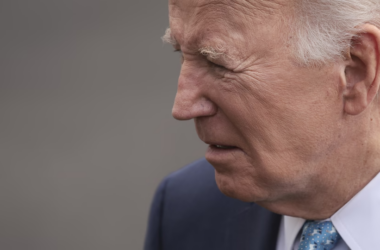The United States is promising new bombs to Israel as part of the billions in military aid it provides around the world. Who benefits the most – and why? The United States is poised to restart the shipment of 500-pound bombs to Israel that were held up earlier this year after a pause on their export following the brutal offensive in Gaza’s southern city of Rafah, officials told multiple media organizations on Wednesday.
In early May, Biden had paused a single shipment of bombs after Israel ordered the evacuation of Rafah on May 6 and the Israeli military began “targeted” ground operations one day later. Since then, United Nations agencies estimate that about a million Palestinians – many of whom have already been displaced multiple times from other areas of Gaza – have been forced to flee from Rafah. Throughout Israel’s military campaign on Gaza, the US has not only allowed weapons sales to Israel. It has also provided large amounts of other military aid – both financially and, it is believed, through supportive military operations.
Breakdown of US Military Aid
In April, US Congress approved a major round of military aid to both Israel and Ukraine. A total of $95 billion included $60 billion (63 percent) for Ukraine, $26.4 billion (28 percent) for Israel and $8.1 billion (9 percent) for the Asia Pacific region relating to a possible threat from China.
The US is the world’s biggest provider of military aid. So, what exactly is military aid and which countries benefit the most? Is military aid the same as foreign aid? What’s the difference?
Foreign aid is the total amount of aid that is allocated to countries outside the US, including both economic (including humanitarian) and military aid. In 2022, military aid accounted for 14 percent of US foreign aid, according to ForeignAssistance.gov, a non-partisan US organization which makes foreign assistance data available to the public.
In general, most foreign aid falls under the categories of economic and humanitarian assistance. This includes monetary aid to support longer-term economic development in poorer countries, emergency aid needed due to natural or human-induced disasters, and financial aid meant to support US political interests – usually in the form of military aid or military support.
In 2023, foreign aid to Israel from the US was mostly military aid, while foreign aid to other countries, such as Zimbabwe and Afghanistan, was 100 percent economic aid.
Humanitarian vs. Military Aid
Humanitarian aid and military aid can come into conflict with each other. On May 31, Stacy Gilbert, a Department of State official who served in the State Department’s Bureau of Population, Refugees and Migration, resigned from the Biden administration due to the administration’s refusal to accept that Israel has been blocking humanitarian assistance to Gaza. The resignation was prompted by a national security memorandum justifying the billions in military aid being sent to Israel.
In an interview with PBS News Hour, Gilbert stated, “So, when the report came out on May 10, and I read the conclusion, especially the conclusion that Israel was not blocking humanitarian assistance, I decided I would resign, because that was absolutely not the opinion of subject matter experts in the State Department, USAID, the humanitarian community, organizations that are working in Gaza.”
Major Recipients of US Military Aid
Israel
Since the founding of Israel in 1948, it has been the largest cumulative recipient of US foreign aid, receiving about $300 billion (adjusted for inflation) in total economic and military assistance. Roughly $220 billion (74 percent) of that has been in the form of military aid, while the remaining $80 billion (26 percent) has been economic aid. Since 2008, Israel has received mostly military aid with economic aid accounting for less than 1 percent of total US aid to Israel.
Ukraine
Ukraine has also received a large amount of military aid from the US. Most recently, a $300 million emergency military aid package was approved in March to replace depleted military stock in its continuing conflict with Russia. Since 2022 the US Congress has approved five aid packages for the country totaling $175 billion. The most recent legislation was passed in April 2024.
Egypt
The US has also provided military aid to Egypt since the 1979 Egypt-Israel peace treaty to assist with shoring up Egypt’s defensive capabilities and countering “terrorism”. Egypt received $1.3 billion of US military aid in 2023. However, in recent years, the US has begun to withhold military aid from Egypt, citing the country’s human rights record. In September, the US withheld $85 million of the $320 million total military aid that had been set aside for Egypt.
Taiwan and Lebanon
A source close to the Biden administration stated that the $85 million of military aid withdrawn from Egypt would be redirected, with $55 million earmarked for Taiwan and $30 million for Lebanon.
Bulgaria
The US also provides military aid to Bulgaria. Under the US-Bulgarian Defense Cooperation Agreement, a security partnership signed in April 2006 giving the US military access to the use of Bulgarian military facilities, the US has provided more than $238 million to Bulgaria over the past five years to support military training, cybersecurity, and military equipment upgrades.
Historical Context and Strategic Interests
The US has provided aid to Israel since 1948. While this was initially primarily in the form of economic aid, it massively increased military aid in 1973, when Egypt and Syria launched a surprise attack on Israel – known as the Yom Kippur War – to regain territory including historic Palestine, the Sinai desert and the Golan Heights, that they had lost in 1967. Under the codename “Operation Nickel Grass”, US President Richard Nixon ordered an emergency supply of military aid to Israel in October 1973, helping Israel to push the Egyptians back across the Suez Canal.
At the time, Nixon said to his national security adviser and secretary of state, Henry Kissinger: “Send everything that will fly.” Israel would claim victory three weeks later – on October 25 – and a ceasefire was declared.
In the 1950s, the former prime minister and one of the founders of Israel, David Ben-Gurion, had already begun popularizing the idea that Israel should be a military superpower in the Middle East with what was termed “qualitative military edge”.
A policy of ensuring Israel would indeed have such an advantage over its neighbors was codified into US law under the Naval Vessel Transfer Act of 2008, which ensured that every security assistance request from the Israeli government would always be evaluated in light of the US policy to uphold Israel’s qualitative military edge.
Conclusion
US military aid is a critical component of its foreign policy strategy, aimed at securing its interests and supporting allies across the globe. From Israel and Ukraine to Egypt, Taiwan, and Bulgaria, the recipients of this aid benefit from enhanced military capabilities and strategic support, which in turn, bolsters US influence and security objectives. While this aid often brings about significant geopolitical advantages, it also raises complex issues related to human rights, international conflict, and the balance between military and humanitarian priorities. Moreover, such spending may be seen as excessive considering the need to finance the US own military installations abroad on top of all the aid. This issue has been brought up repeatedly over the years but little has been done. Even as spending on some countries are being curbed the resources find themselves simply allocated to so place else never being actually saved like a never-ending money drain on the shoulders of taxpayers. All for the leading position and prestige on the international arena.








